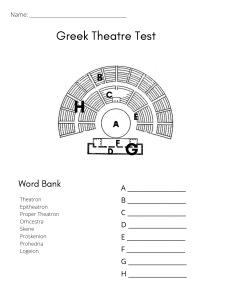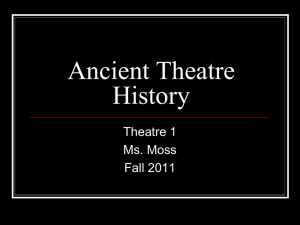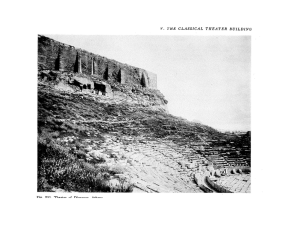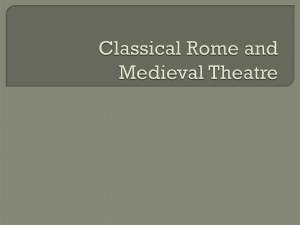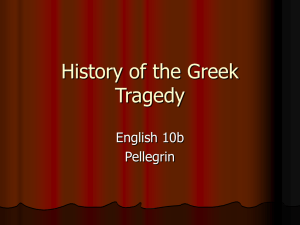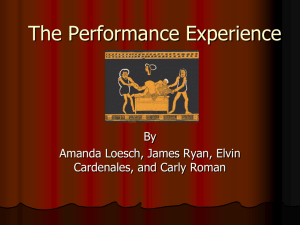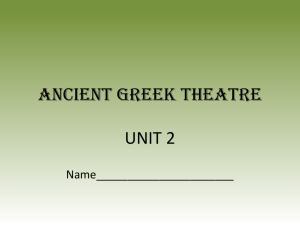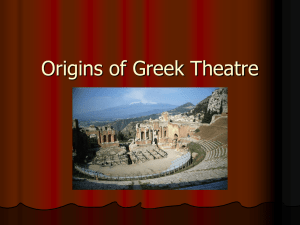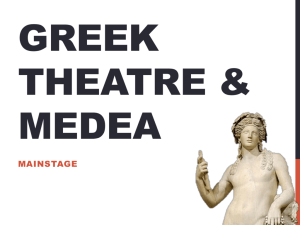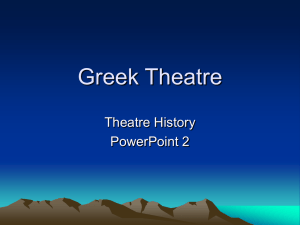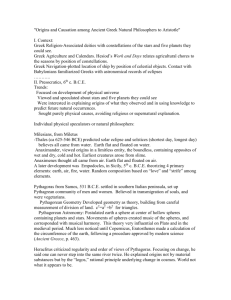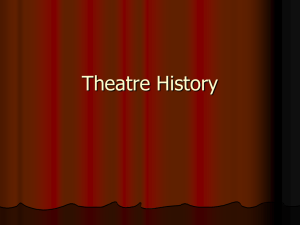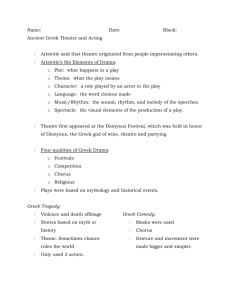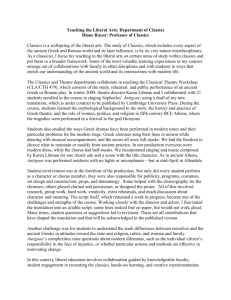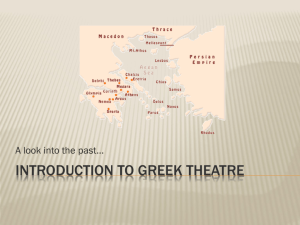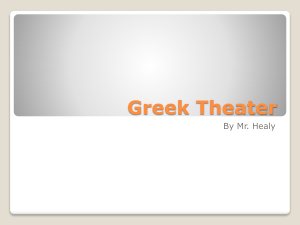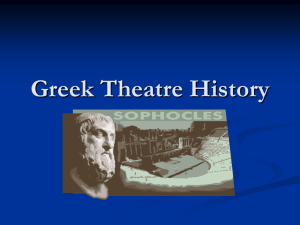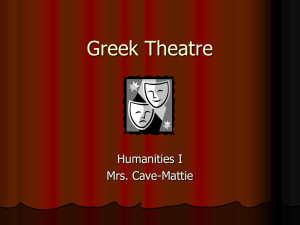Document
advertisement
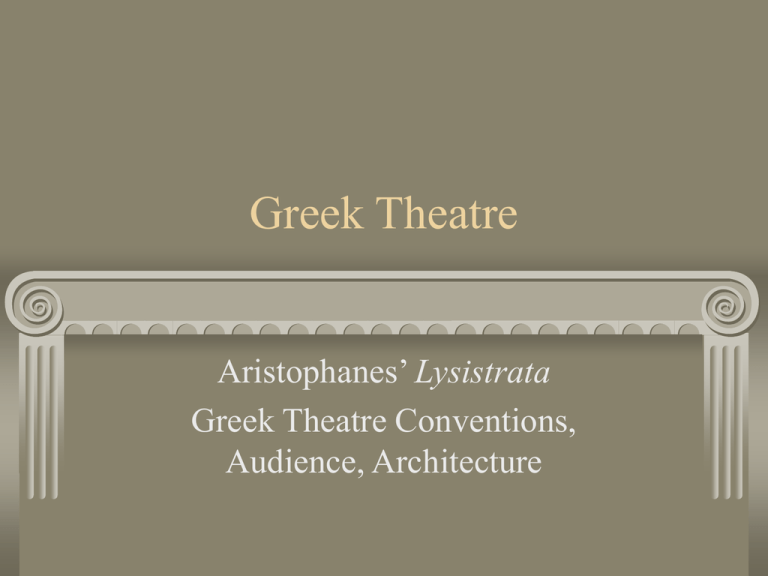
Greek Theatre Aristophanes’ Lysistrata Greek Theatre Conventions, Audience, Architecture Lysistrata 411 BCE The pact: Athens, allies, foes Also seize the treasury… Two choruses: old men and old women who bicker at the gates of the Acropolis Comic styles: situational comedy, farce, satire Performances at Festivals Athens had 4 festivals winter-spring City Dionysia, late March; contests among tribes and individuals; drama is biggest Lenaea: late Jan, more comedies Archon grants a chorus to writers and appoints choregus to fund writers Writers create scripts, rehearse chorus and principles, act 2 days dithyramb choruses, 3 days tragedies, 1 day comedies (from 486 BCE) Competition among choregus, writers, actors Greek Theatre Architecture Theatre Structures Orchestra: circle to 1/2 circle Amphitheatre: wood to stone, up to 14,000 Skene: wood to stone; only doors and steps Proskenion Parodos (left vs. right, chorus entrance and exit) Thymele (altar, usually used) Deus ex machina and Ekkyklema Periaktoi: not til Hellenistic era: first painted and changing scenery Actors and Costumes Possession by role like possession by gods or like inebriated state; link to Dionysus All men; women are not citizens and not on stage Protagonist, 2nd and 3rd actors; change costume and mask for character changes Dwarfed by surroundings Short chitons on men, long on women Masks, cothurnoi, comedy uses phallus Masks have not survived; they were made of wood, plaster, linen. These are terra cotta models. Influence of Greek Drama 4th Century Hellenistic Age, then Athens falls by 338 BCE Cultural influence spreads to Egypt, the Middle East, and Rome. Extant Greek texts (plays, gov’t records) and other Greek artifacts (figures, vase paintings) come to us mostly from Rome. Much has been lost: Aristophanes: we have 11 plays out of at least 40 (titles survive). Music? Dance? When did painted scenery arrive (periaktoi)
